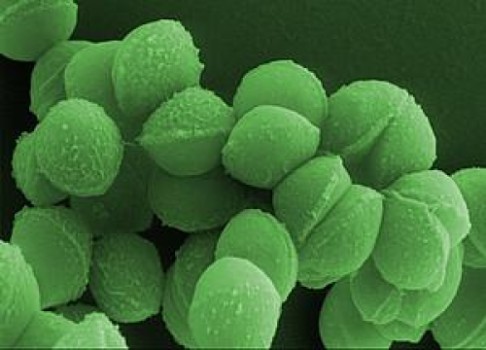
Genome engineering with the RNA-guided CRISPR-Cas9 system in animals and plants is changing biology. It is easier to use and more efficient than other genetic engineering tools, thus it is already being applied in laboratories all over the world just a few years after its discovery. This rapid adoption and the history of the system are the core topics of a review published in the journal Science. The review was written by the discoverers of the system Prof. Emmanuelle Charpentier, who works at the Helmholtz Centre for Infection Research (HZI) and is also affiliated to the Hannover Medical School and Umeå University, and Prof. Jennifer Doudna from the University of California, Berkeley, USA.
Many diseases result from a change of an individual’s DNA — the letter code that genes consist of. The defined order of the letters within a gene usually codes for a protein. Proteins are the workforce of our body and responsible for almost all processes needed to keep us running. When a gene is altered, its protein product may lose its normal function and disorders can result. “Making site-specific changes to the genome therefore is an interesting approach to preventing or treating those diseases,” says Prof Emmanuelle Charpentier, head of the HZI research department “Regulation in Infection Biology.” Due to this, ever since the discovery of the DNA structure, researchers have been looking for a way to alternate the genetic code.
First techniques like zinc finger nucleases and synthetic nucleases called TALENs were a starting point but turned out to be expensive and difficult to handle for a beginner. “The existing technologies are dependent on proteins as address labels and customizing new proteins for any new change to introduce in the DNA is a cumbersome process,” says Charpentier. In 2012, while working at Umeå University, she described what is now revolutionising genetic engineering: the CRISPR-Cas9 system.
It is based on the immune system of bacteria and archaea but is also of value in the laboratory. CRISPR is short for Clustered Regularly Interspaced Palindromic Repeats, whereas Cas simply stands for the CRISPR-associated protein. “Initially we identified a novel RNA, namely tracrRNA, associated to the CRISPR-Cas9 system, which we published in 2011 in Nature. We were excited when Krzysztof Chylinski from my laboratory subsequently confirmed a long term thinking: Cas9 is an enzyme that functions with two RNAs,” says Charpentier.
Together the system has the ability to detect specific sequences of letters within the genetic code and to cut DNA at a specific point. In this process the Cas9 protein functions as the scissors and an RNA snippet as the address label ensuring that the cut happens in the right place. In collaboration with Martin Jinek and Jennifer Doudna, the system could be simplified to use it as a universal technology. Now the user would just have to replace the sequence of this RNA to target virtually any sequence in the genome.
After describing the general abilities of CRISPR-Cas9 in 2012 it was shown in early 2013 that it works as efficiently in human cells as it does in bacteria. Ever since, there has been a real hype around the topic and researchers from all over the world have suggested new areas in which the new tool can be used. The possible applications extend from developing new therapies for genetic disorders caused by gene mutations to changing the pace and course of agricultural research in the future all the way to a possible new method for fighting the AIDS virus HIV.
“The CRISPR-Cas9 system has already breached boundaries and made genetic engineering much more versatile, efficient and easy,” Charpentier says. “There really does not seem to be a limit in the applications.”
Story Source:
The above story is based on materials provided by Helmholtz Centre for Infection Research. Note: Materials may be edited for content and length.
Journal Reference:
- J. A. Doudna, E. Charpentier. The new frontier of genome engineering with CRISPR-Cas9. Science, 2014; 346 (6213): 1258096 DOI: 10.1126/science.1258096
